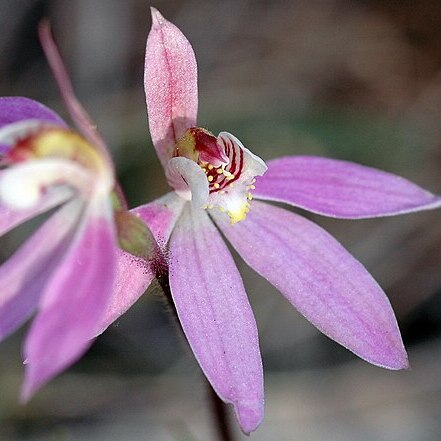Leaf 90–150 × 3–4 mm. Flower stem 120–250 mm tall, thick, 1–5-flowered (usually 1–3). Flowers 18–16 × 20–30 mm, white, pale pink or bright pink; externally greenish to brownish pink, sometimes with a darker band; labellum white to pink with red bars; midlobe cream to pale yellow; calli cream to yellow; column green with red bars. Dorsal sepal 11–15 × 3–4 mm, erect. Lateral sepals 13–17 × 3.5–4 mm. Petals 10–13 × 3–3.5 mm. Labellum 5.5–7 × 5.5–7 mm; lateral lobes entire; midlobe recurved with 4–12 short marginal teeth. Calli in 2–4 rows to base of midlobe. Column 7–8 × 3.5–4 mm, broadly winged.
A small orchid. They grow in the ground. They have underground tubers. It grows 12-25 cm tall and 1.5 mm thick. It has a single hairy leaf. The leaf is narrow and 9-15 cm long by 3-4 mm wide. Leaves are slightly hairy. The flowers are one to two colourful flowers. The flower stalk is 30 cm long. Each flower is about 3-5 cm across. Flowers can be white or pink but with red bars on the upper lip.

